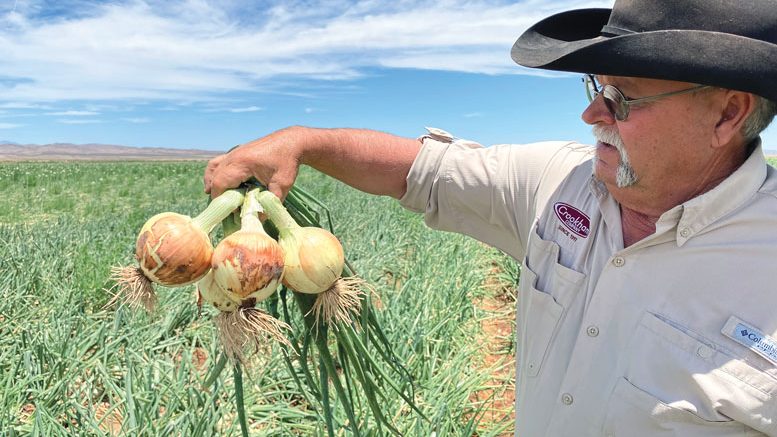|
Click to listen to this article
|
Story by Denise Keller, Editor
Photos courtesy W.R. Johnson & Sons
Farming in a harsh environment and facing higher production costs calls for innovation and improved efficiency. Luckily, this comes naturally for onion grower James Johnson. A fourth-generation New Mexico farmer, Johnson is always on the lookout for a better way to grow a crop.
“I don’t like being in a rut. Ruts don’t fit me well,” the grower says.
His willingness to try new things explains the autonomous weeding prototype that has been tending his onion fields the last few years.
Johnson, a managing member of W.R. Johnson & Sons and vice president of Carzalia Valley Produce, has been working with Carbon Robotics to test its laser-weeding robot. The partnership began in 2018 when the startup company contacted Johnson for photos and video of onion fields to use in building vision software to differentiate between onions and weeds. After coming out with a prototype of its autonomous laser-weeder, the company began beta testing it in Oregon in the summer of 2019 and at Johnson’s farm in Columbus, New Mexico, that fall through the following spring.
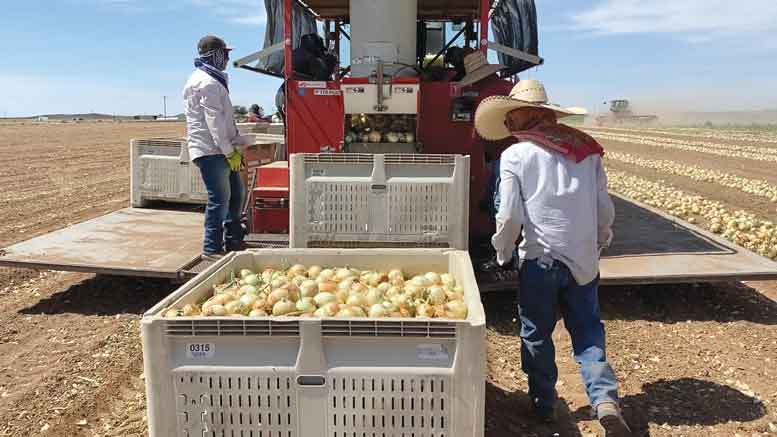
Since that time, Johnson has watched the product undergo intensive development. A team of as many as eight engineers has set up shop on the farm in order to see firsthand how the machine operates in various conditions such as wet ground, furrows and different soil types and to learn more about weed growth.
“My bet was on the development team because I had spent solid days, weeks and months with them,” Johnson recalls. “There was no question in my mind that these guys were going to make it work because I had seen that they kept advancing every day.”
The team took its testing efforts to eastern Washington in the spring of 2021 and returned to Johnson’s farm that fall.
“It was amazing to see the change that had happened while they were gone. It’s like watching your kids grow up. You see them every day and you don’t think they’ve grown much. But Grandpa and Grandma who only see them every six months are astounded,” Johnson explains. “It blew me away how much they had advanced on the software and implementation and the workings of this machine.”
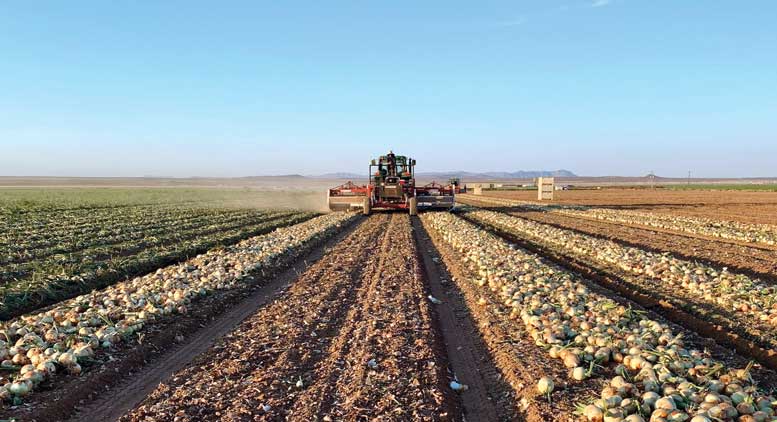
Streamlining Operations
Unlike the autonomous prototypes, the 2022 commercial version of the laser-weeder is a tractor-pulled implement, meeting state laws that prohibit unassisted autonomy, according to Johnson. The grower is waiting on delivery of his own unit for use in his 500 acres of onions. Currently, weed control in his conventional onion fields consists of mechanical cultivation, herbicide application and hand weeding. The hand weeding costs $600 – $1,000 per acre in conventional onions and over $1,000 per acre in organics. While Johnson doesn’t expect the new machine to completely offset the labor expense immediately, he does estimate it will save at least $500 per acre.
“The other thing we don’t know is what we’re going to gain by not applying herbicide,” Johnson points out. “It’s yet to be determined how much yields will improve by not applying herbicides.”
The grower is hoping to eliminate herbicide applications eventually, but will play it by ear at first.
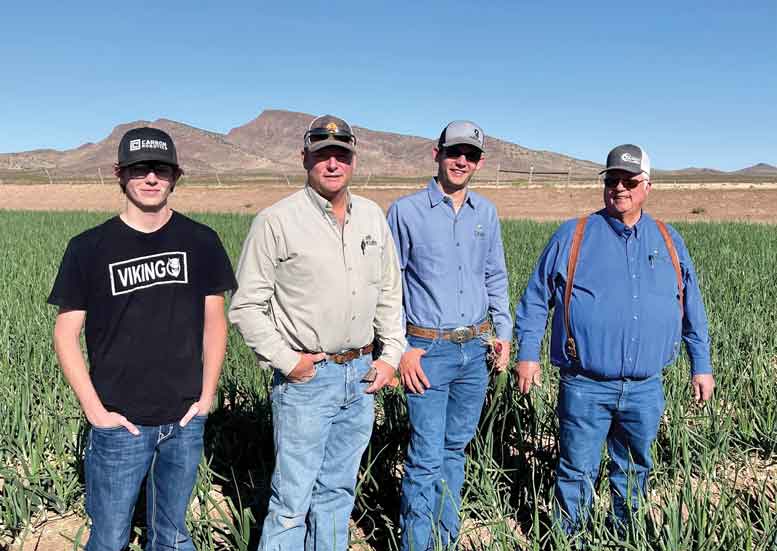
Use of the laser-weeder will also allow Johnson to pursue other opportunities on his operation by reallocating labor resources from hand weeding to other crops.
“I’m always looking for a better way to do things,” Johnson says. “Getting these engineers involved in agriculture has probably been the best thing to ever happen to the industry as a whole because this has brought huge interest from the engineering community, realizing that they can make a big difference in the world in the way that food is produced. That’s why it was cool to work with them because they really care. They want to do better.”
Improving production practices is not new at W.R. Johnson & Sons. Johnson practices regenerative agriculture, growing cover crops between cash crops and using minimal till or no-till farming as much as possible, and the farm is completely subsurface drip irrigated.
In addition, he began working with a lab in the Netherlands in 2019 to conduct plant sap analysis, measuring a wide range of minerals and fertility in plants. By June 2020, Johnson had eliminated the need for insecticide and fungicide applications. A nutrition plan based on sap analysis has helped the farm reduce other inputs, as well.
“Ask me if I’m worried about nitrogen being through the roof,” Johnson says. “We’re not because we have our soils producing probably 70 percent of the nitrogen that we need.”
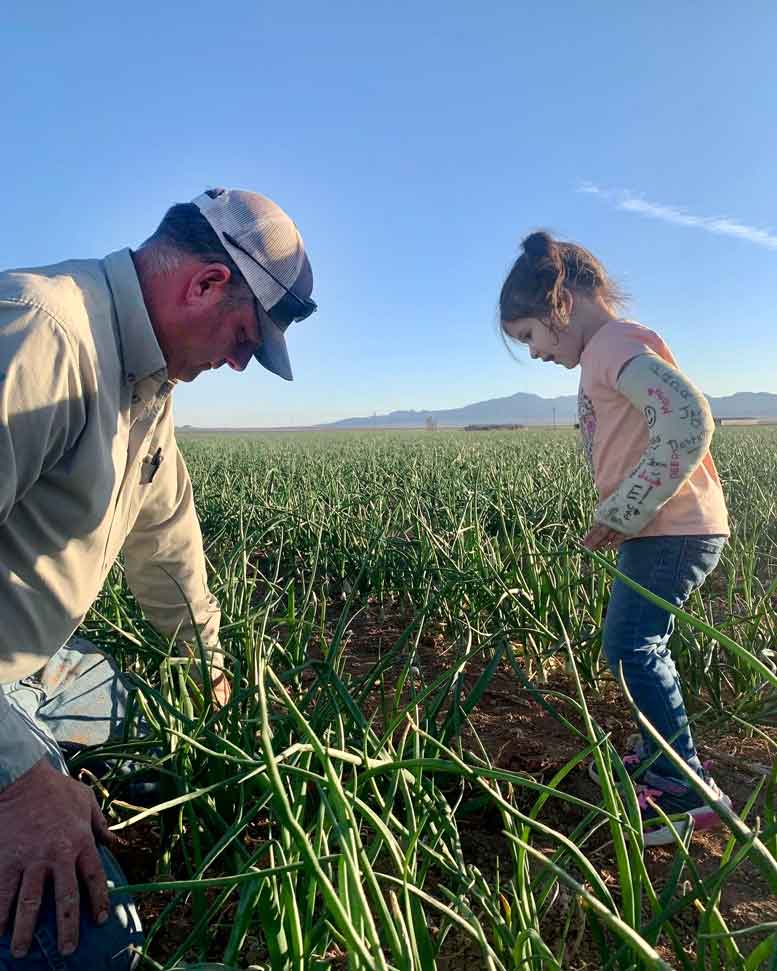
Farming for Five Generations
The farm grows all colors of onions – 50 percent yellow, 30 percent red and 20 percent white – as well as sweet onions. Yellow organic onions make up about 10 percent of the crop. Onions are grown mostly for the retail market with a secondary emphasis on foodservice. Short-day onions are seeded in September and October and harvested at the end of May through the first of July. Intermediate-day onions are planted in January and February for a July and August harvest.
Onions are packed at Carzalia Valley Produce, a subsidiary of W.R. Johnson & Sons. The farm’s own onions account for one-third of the packing shed’s output, with the majority packed for other growers in the U.S. and Mexico.
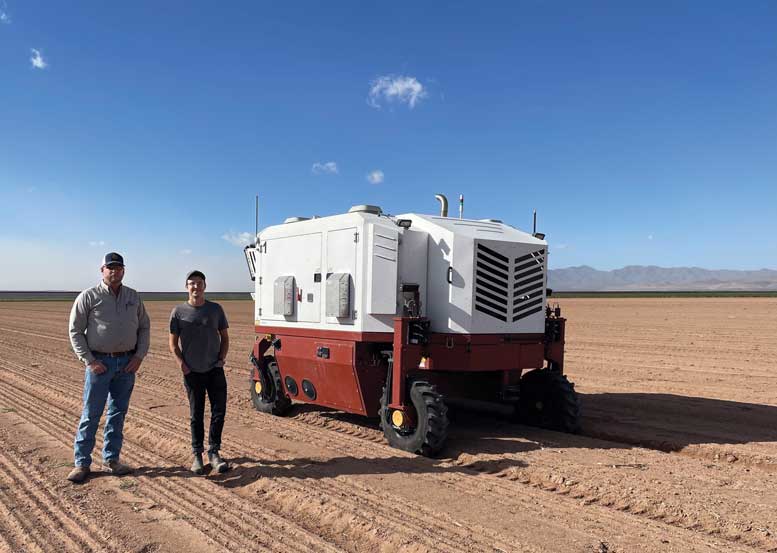
In total, W.R. Johnson & Sons farms more than 3,000 acres of onions, cotton, pecans, durum wheat, barley and grain sorghum.
The Johnson family has been farming the land since 1918 when James Johnson’s great-grandfather, William R. Johnson, moved to New Mexico as a cattle rancher. The drilling of the first irrigation well in 1953 allowed him to start farming crops including canning tomatoes. Most of the tomato production moved to California in the 1960s following the mechanization of harvest, and Johnson became a cotton and grain farmer. After dabbling in onion production in the early 1950s, the family returned to the onion business in 1980 and built the packing shed.
Today, James Johnson is joined by his brother, William IV, who manages the pecan orchards, and their dad, William III, who oversees the packing operations and remains the family’s go-to guy for advice. James’ two sons, T.J. and Walker, also work full time on the farm.
The farm’s location in the high desert of southwest New Mexico presents difficult farming conditions including high-sodium soil and water, extreme heat as well as extreme cold due to high elevations. A changing climate is also making planting and harvest dates less predictable.
In addition to weather, the farm – like others across the country – is facing the challenges of increasing input prices, supply chain issues and labor shortages. After steadily increasing onion acreage since 2018, the farm reduced onion acreage by 25 percent this year due to the tight labor supply because Johnson didn’t want to grow a crop larger than the packing shed could handle.
To face challenges going forward, Johnson intends to continue adapting to change and fulfilling his commitment to improving the land on which his family has been farming for five generations.

